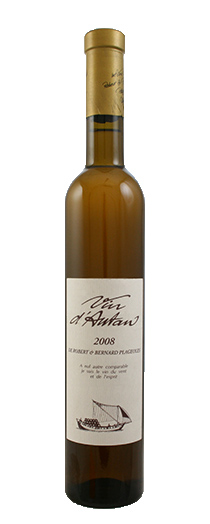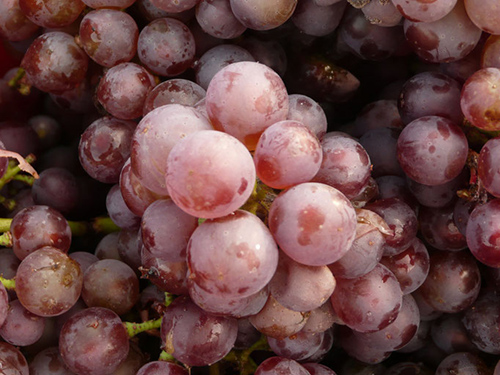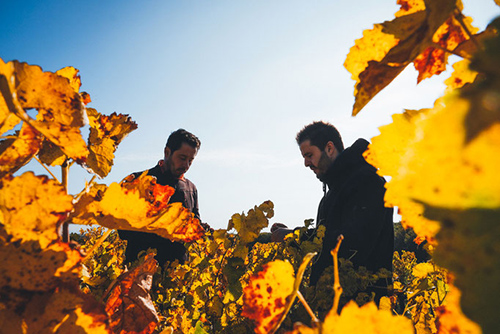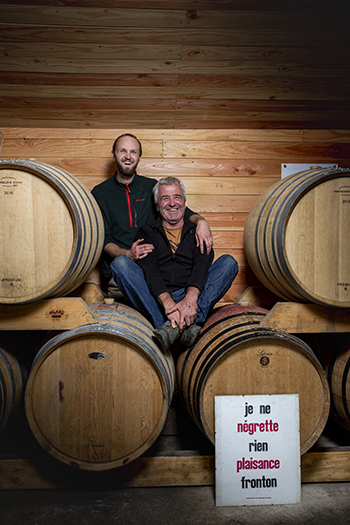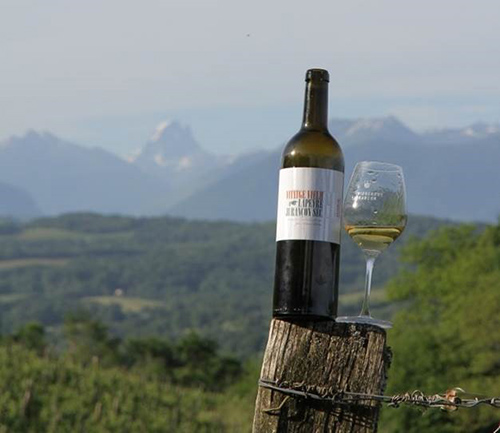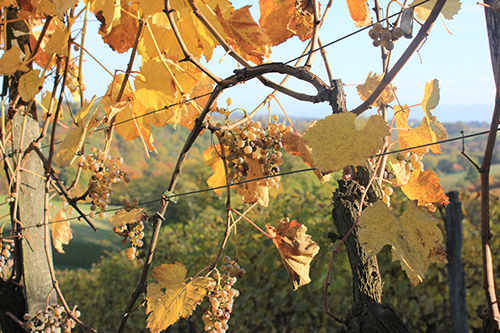An overview plus historical nuggets & oddments
Les Caves de Pyrene, its name and reputation synonymous with the Pyrenees, was founded on the wines and gastronomy of the south western part of France. But what is the south west? On the one hand, it seems to embrace Bordeaux and the satellite appellations of Buzet, Duras & Marmandais (the middle Garonne, one might say); it also stretches through Gascony into Madiran & Vic-Bilh, further on to the foothills of the Atlantic Pyrenees and historic Jurançon & remote Irouléguy. Further east, this amorphous wine region also delves into Cahors and the gorges of the Aveyron with Marcillac) and encompasses the appellations of Gaillac and Fronton to the south.
Gaillac is surely one of the most original wine growing areas in France in every sense. The Romans started planting vines as far back as the 1st century AD, then in the Middle Ages, the Church leased out land to farmers who were prepared to plant vines. François I of France used to buy Gaillac wines. When he visited the town in 1533, he was given fifty barrels as a gift. He offered some of them to Henry VIII of England on the occasion of their meeting in the field of gold and the latter was to drink more of these wines regularly in the course of the following years, as is shown in his accounts books. In the 18th century, Catel wrote the following words in his Memoirs (1633): “Gaillac is a town standing on the Tarn river in the region of Albi; this terroir is widely renowned for the excellence of the wines that are grown there, which are sold to both Italy and England…” and he added that “the wine is perfect for the stomach and is not in any way harmful, for it goes to the veins rather than to the head”.
The range of grapes and styles is amazing (and only recently rediscovered), the limestone slopes being used to grow the white varieties, whilst gravel areas tend to be reserved for the red grapes.
The Mauzac grape, for example, is especially versatile: it is resistant to rot and ripens late and may be found in everything from sparkling wines (methode rurale or gaillacoise was being praised by Provençale poet Auger Gaillard long before champagne was a twinkle in Dom Pérignon’s eye) through dry (en vert), to semi sweet and even vin jaune. Mauzac Blanc is gently perfumed with a nose of apples and pears and an underlying chalkiness. Another major variety is Len de l’El, which, in Occitan, means “far from the eye” (loin de l’oeil). Muscadelle, Verdanel & Ondenc are others. The reds are made predominantly from two more native varieties, Duras and Braucol, although the temptation to create a Bordeaux style in the interests of commercialism has meant that grapes such as Merlot, Cabernet and Syrah have found their ways into blends. Robert Plageoles has been dubbed “one of the artists of the appellation”. Mauzac is his particular passion. He was instrumental in resurrecting all styles; and that has continued down the generations with the accent always on wines with purity, delicacy and finesse.
The Plageoles family believed in rediscovering what had been lost. Not for them the slavish adherence to global varietals. Père Plageoles grubbed up his plantings of Sauvignon and concentrated instead on the native Mauzac, in which he has found the potential for a whole range of styles (and different varieties – Vert, Blanc, Rose, Noir…) Mauzac, when dry (or sec tendre to be precise) can produce a fascinating soft style redolent of pears, white cherries and angelica; it is also responsible for sparkling wines and an array of sweeties ranging from the off dry (Roux) to the unique piercingly dry sherry-like Vin de Voile. This latter arcane wine is made from the first pressing, which is fermented in old oak and returned to the same barrel where it remains for a further seven years, losing about 20% of volume. After a year the must develops a thin veil (voile) of mould which protects it from the air. The flavour is delicate, reminiscent of salt-dry amontillado, with the acidity to age half a century. This curious wine would go well with a soup of haricots beans laced with truffle oil or a Roquefort salad with wet walnuts.
The Vin d’Autan, on the other hand, is made from the obscure Ondenc (“the grape which gave Gaillac its past glories”) in vintages when the grapes shrivel and raisin in the warm autumn winds. The style: similar to a Beerenauslese or a Tokaji, contriving to be fantastically sweet, yet subtly fresh: bruléed autumn apples and pears flecked with syrup and a persistent elegant finish hinting at walnuts. According to Paul Strang, Plageoles describes it as “a nul autre comparable, il est le vin du vent et de l’esprit.” They order these things better in France (I wish I’d said that too)!
Back to Mauzac, and back to Nature (so to speak) why not get your frothy jollies from the infinitely gluggable sparkler. Champagne producers – please note quality of base product here! Grapes (Mauzac Rose in this case) are destemmed into concrete vats and undergo a short maceration and natural fermentation. Bright savoury nose, notes of gravel, earth, spice. Cranberry and red cherry. Delicious acidity. Light alcohol and very soft tannins. The Mauzac Noir is a pale red very individual wine has earthy, vegetal aromas, notes of green and white pepper and a touch of cherry and blueberry on the finish. The Prunelart, on the other hand (a grape revived by the Plageoles and vinified as a varietal) is darker and more powerful. Rich, lifted, plummy nose leading to a silky-smooth palate, with plum, soft liquorice and something cool and fresh too – green peppercorns, and then meat and earth come into subtle play with the bright fruit. Some gentle, fine, peppery, spicy tannins kick in, keeping the finish fresh. Prunelart is the art of pruniness – onomatopoeia works!
Digression: The History of a Unique Wine
The Autan wine, the flagship of this domain, is made from Ondenc, a grape variety originally from the Tarn Valley and which had been widespread in the southwest region of France since the Middle Ages. Phylloxera, however, almost wiped it out. Dr. Guyot, who invented cane pruning (taille Guyot as it is called in France), used to say that Ondenc produced wines that could rival the best Sauternes. Robert Plageoles replanted almost five acres (2 ha) of it in 1985.
The Plageoles don’t just stop there. They also perpetuate a way of working which was prevalent in Gaillac from the 12th to the 18th century. Robert, an avid reader of old manuscripts, discovered writings on this type of work in some forgotten archives. While the way they prune the vines combines tradition and new methods (gobelet and trellising), when the grapes are ripe, the vintners go through the vineyards and pinch the peduncles to stop the sap from flowing to the fruits. The grapes then slowly dry out, thanks to the Autan wind, which blows from the southeast. Later they are carefully picked and left to desiccate even further on straw mats, with a method similar to the one used to make straw wines. After pressing, the grapes ferment and the elevage in concrete tanks lasts 12 months. Robert Plageoles and his son have always refused to use wood barrels for the elevage, as they want to keep the purity of the fruit and the characteristics of the terroir.
Leaving the overripe grapes on the vine and the subsequent drying out of the fruits on straw mats dramatically reduce the yield. In 2001, it was only 0.45 ton/acre (6hl/ha). “This is a climatological wine,” says Plageoles, which explains why it is not always consistent in style. From this point of view, 2008 was a perfect vintage.
The Plageoles torch has been passed to Florent & Romain, the latest generation of terroir-istes to respect their patrimony.
Marcillac as medicine
“I am not fond, for everyday at least, of racy, heady wines that diffuse a potent charm and have their own particular flavour. What I like best is a clean, light, modest country vintage of no special name. One can carry plenty of it and it has a good and homely flavour of the land, and of the earth and sky and woods” ~ Steppenwolf.
I like to think that the wines of Marcillac inspired our wine bar/restaurant called Terroirs. When the idea first sprang into our heads, we envisioned this sapid, gravelly red wine being poured into outstretched beakers and fillettes, and then guzzled carelessly by our captive audience of quaffers and scoffers with a pot au feu or confit de canard. Marcillac is the most sanguine of wines, vivid, nourishing, the wine of the country.
On the Aveyron river just north west of Rodez, Marcillac is linked historically to the Abbey of Conques, and is the only appellation in the Aveyron region to enjoy AOP status. To the north are the barren plateaux called les causses. This is wild mountainous country gutted with deep river gorges. For nearly a thousand years, vineyards were the basis of the region’s economy. In 1868, phylloxera destroyed the vineyards by ninety percent. The economy was devastated and many natives of the region moved away.
The style or philosophy of the wines is connected to the area and the grape variety. The vineyards are grown on terraces with very steep gradients; the soil is the reddish-purple le rougier with a schist underlay; the grape variety is mansois, otherwise known as fer servadou; only old barrels and traditional methods are used; minimal sulphur is required in the fermentation. The result? Violet-tinted, brilliant fresh reds packed with fresh currant fruits, provocative acidity and a medicinal minerality, the vinous equivalent of Chalybeate water.
The medieval citizens of Rodez used to take Marcillac for their health, because it was preferable to drinking the local water. More recently, Pascal Monestier, the son of a pharmacist in Marcillac, in a thesis on the prevention of cholesterol by the consumption of wine, discovered especially high concentrations of cathecine and procyamidol – anti-cholesterol agents. Well, as the bible says, “Take a little wine for thy stomach”!
Digression: The Story of Victor of Aveyron, the wild child
Victor of Aveyron was a feral child who lived naked and alone in the woods of the Aveyron before being found wandering near Saint-Sernin-sur-Rance in 1797. He was captured, escaped and re-emerged a couple of years later when he was taken in by the townspeople. Eventually, he was taken to Paris to the National Institute of the Deaf to be studied by Roch-Ambroise Cucurron Sicard, who believed that by educating the boy and giving him the tool language he would elevate him from his savage state.
Victor was given his name after the leading character in the play Victor, ou l’enfant de la foret, the oddly prescient melodramatic play — indeed, the first fully developed melodrama — by René Guilbert de Pixérécourt, written in 1797/8, first produced in 1798 and published in 1803, and itself based on a book with the same name written by François Guillaume Ducray-Duminil in 1796.
The Enlightenment caused many thinkers, including naturalists and philosophers, to believe that human nature was a subject that needed to be redefined and looked at from a completely different angle. Because of the French Revolution and new developments in science and philosophy, man was looked at as not special, but as characteristic of his place in nature. It was hoped that by studying the wild boy, this idea would gain support. He became a case study in the Enlightenment debate about the differences between humans and animals.
Jean Marc Gaspard Itard, a young medical student, effectively adopted Victor into his home and published reports on his progress. Itard believed that two things separated humans from animals: empathy and language. He wanted to civilise Victor with the objectives of teaching him to speak and to communicate human emotion. Victor showed significant early progress in understanding language and reading simple words but failed to progress beyond a rudimentary level. Itard wrote “Under these circumstances his ear was not an organ for the appreciation of sounds, their articulations and their combinations; it was nothing but a simple means of self-preservation which warned of the approach of a dangerous animal or the fall of wild fruit.”
The only two phrases that Victor ever actually learned to spell out were lait and Oh, Dieu. It would seem, however, that Itard implemented more contemporary views when he was educating Victor. Rousseau appears to have believed “that natural association is based on reciprocally free and equal respect between people.” This notion of how to educate and to teach was something that although did not produce the effects hoped for, did prove to be a step towards new systems of pedagogy.
By attempting to learn about the boy who lived in nature, education could be restructured and characterized. While Victor did not learn to speak the language that Itard tried to teach him, it seems that Victor did make progress in his behaviour towards other people. At the Itard home, housekeeper Madame Guérin was setting the table one evening while crying over the loss of her husband. Victor stopped what he was doing and displayed consoling behaviour towards her. Itard reported on this progress.
Victor died in Paris in 1828.
Victor’s story was memorably retold in François Truffaut’s “L’Enfant Sauvage”. One of the striking scenes in the film sees the professor trying to teach Victor morality. When Victor accomplishes a task successfully, he is given a glass of milk as a reward. However, on this occasion the professor strikes him across the face. Victor cries (not because he is hurt – he is virtually impervious to pain), but presumably because he dimly recognises the injustice of the action.
Horses for Cahorses
Cahors has enjoyed a long and complex history. Vines were originally introduced by the Romans, and when the river Lot was eventually adapted as a trading waterway, the reputation of Cahors became established all over the world. By the 14th century Cahors was being exported throughout Europe including England (where it earned the sobriquet of “The Black Cahors!”) and Russia; it was even considered superior to Bordeaux in France.
Paul Strang quotes Monsieur Jullien in his book Wines of South-West France describing this strange black wine: “They make a point of baking a proportion of the grapes in the oven, or bringing to the boil the whole of the vintage before it is put into barrel for its natural fermentation… The first-mentioned process removes from the must quite a lot of the water content of the wines, and encourages a more active fermentation in which the colouring agents dissolve perfectly”.
Tastes change… now one can find wines made by carbonic maceration. In the 1990s Pascal Verhaeghe from Château du Cèdre started using the micro-oxygenation technique (pioneered by Patrick Ducournau in Madiran) to create wines of great suppleness, whilst Jean-Luc Baldes (whom we formerly worked with) created his version of the original black wine. By the way, an anagram of Cahors Auxerrois is “Ou! Six Rare Cahors!” Sometimes, as Voltaire said, the superfluous is very necessary.
The vineyard of Cahors, one of the oldest in France, was much praised as early as the 7th century by the Bishop of Verdun. In the 13th century, the English, who were the then masters of Guyenne, considered it very highly, and so did the Tsar Peter the Great. Destroyed by phylloxera at the end of the 19th century and later killed by the devastating frost of 1956, it is only in the early sixties that it came back to life, when the Auxerrois, a noble grape variety specific to the appellation, was cultivated again. Long-lived, powerful and generous, richly endowed in tannins and aromas of liquorice, aniseed and red fruits, the wine of Cahors has re-conquered connoisseurs and won back its rightful place among the great appellations of France.
In our time, Cahors has run the gamut of styles, steadily increasing in volume – and this is influenced by the perception of the Malbec grape. Once Malbec might be prized for its acidity and earthy capability, now the wines made from this grape track the Argentinean blockbusters and new wave new oaked Bordeaux wines. One should look at the wines of Jean Jouffreau (Clos de Gamot & Clos Jean) for a reminder of the herbaceous, sanguine origins of the grape variety.
Négrette Rien
Fronton and Villaudric are embraced in the Côtes du Frontonnais. We are due north of Toulouse here and just west of Gaillac between the Tarn and the Garonne. The unique Négrette grape grows here. The story is that the Knights Templar brought the vines back from Cyprus almost 900 hundred years ago and called it Négrette because of its dark skin. Fronton is one of the oldest vineyards in France. It was the Romans who planted the first vines on the terraces overlooking the Tarn Valley. But it was only in the 12th century that the Négrette appeared, the variety which was to write Fronton’s history.
At this time, the vines belonged to the Knights of the Order of St John of Jerusalem. They were the ones who, on one of their crusades, discovered and brought back a local grape from Cyprus, the Mavro (which means black in Greek), out of which the Cypriots used to make a wine to “increase their valour.” The Knights introduced this grape to their commanderies in the Occident, including that of Fronton. Over the years, the Mavro became the Négrette and is the origin of the typicity of Fronton wines, the only area in France where this variety has become perfectly and durably acclimatised.
When Calisstus II, 160th Pope after St Peter, came to consecrate the church in Fronton on 19th July 1191, he was so enthusiastic about the wine that he demanded that its praises be sung on parchment.
Much later, the two neighbouring parishes of Fronton and Villaudric quarrelled over the supremacy of their soils. The story goes that in 1621, during the siege of Montauban, Louis XIII and Richelieu, having each taken quarters in one of the two towns, sent each other a gift of the respective wines.
Négrette makes good quick-maturing wines, quite low in acidity, but with a pronounced and particular flavour of almonds, white pepper, cherries, rhubarb and liquorice. The wines are given structure by the addition of Syrah, the Cabernets and Gamay in various quantities. The wines reflect their terroir: the soil is poor, a red stone called rouget with a base of iron and quartz; you can sense their earthy digestibility, and taste the significant concentration of minerals.
Mad for VB
“… Sebastien is a man of hot temper.”
“He is a southerner”, admitted Sir Lulworth; to be geographically exact he hails from the French slopes of the Pyrenees. I took that into consideration when he nearly killed the gardener’s boy the other day for bringing him a spurious substitute for sorrel. One must always make allowances for origin and locality and early environment; ‘Tell me your longitude and I’ll know what latitude to allow you’, is my motto.”
The Blind Spot – Saki
There have been vineyards in Madiran or Vic-Bilh (to give its original dialect name) since the 3rd century and, in the Middle Ages, pilgrims en route for Santiago de Compostela appreciated the wines. Pacherenc may be made from any one of a variety of grapes: Arrufiac (or arrufiat or ruffiac) is traditional, although many growers are turning to Gros and Petit Manseng and even a little Sauvignon. Dry, off dry or sweet, these wines are unusual and quite distinct from Jurançon with flavours of spiced bread and mint
Small fact insert: Pacherenc du Vic-Bilh comes from the compression of the Béarnaise expression “Pachets en renc” which means piquets (vine posts) en rang (in rows) and Vic-Bilh is the old name of the province.
As for Madiran, this inkier-than-thou purple-red wine (made mainly from Tannat) helped to put the south west on the wine map in the 80s and 90s. This was the era of more is more. Intense super-charged tannic new-oak-cushioned micro-bullaged wines. Wines to rival the best of Bordeaux. It was the vogue to line up some first growth clarets for a blind tasting, and insert a ringer (often a Bergerac, Madiran or New World Cab Sauv) which would invariably trounce the illustrious opposition.
Wines that bring you to your Pyre-knees
“When I was a young girl, I was introduced to a passionate Prince, domineering and two-timing like all the great seducers: Jurançon.” – Colette
The history of Jurançon begins in effect with Henri IV, born in Pau when it was the capital of the Kingdom of Navarre. The story is that during his christening his lips were rubbed with Jurançon and cloves of garlic, the prelude to any great reign one would imagine.
The area of Jurançon lies in the foothills of the Pyrenees. The town of Gan marks the eastern limit of the vineyards and La Chapelle-de-Rousse is the village name you will commonly see on growers’ bottles. The slopes here are very steep; the south-west facing vines require a long growing period. In a good vintage, the results can be stunning. The wines range from a dry almondy style with aromas of fresh hay and lemon-zest through the mellow marzipan brioche flavours of moelleux, to the spectacular late-harvested nectars made from the Petit Manseng grape with their beautiful bouquet of honey and flowers and opulent flavours of guava, pineapple and nutmeg.
Jurancon Sec did not exist as a style until comparatively recently. It was a Moelleux style – moelleux meant gently sweet, soft, smooth, mellow…
And then there are the spectacular late harvest nectars. Vent Balaguèr means “southern wind” in Occitan. It is the warm wind, a kind of foehn, that comes from Spain, up from behind the Pyrenees, and shrivels the grapes and concentrates the sugars.
The Petit Manseng grapes are late harvested and then put in trays to perfect the process of “passerillage”. These trays are laid outside on the sun during the hot and sunny days and brought inside the winery in damp and rainy weather. Besides dehydrating, the grapes change in colour, turning from a golden-yellow to russet and brown. Their flavour also changes and hints of apricot, candied orange peel and medlar fruit appear. The range of impressions is extraordinary. Intense, profound nose, returning to haunt one with its multiple nuances: new wood, honeydew, apricot jam, confit of orange and lemon, Corinth raisins, blond tobacco and spiced bread. The mouth is lively, spicy with cooked fruits, also floral with superlative concentration. The tactile sensation is unctuous and rounded, giving the impression of biting into perfectly ripe grapes with poised citric notes. The vanillin flavours are integrated into a rich texture and enrobed by a truly noble acidity. The finish is long and harmonious with mirabelle plum, peach and apricot. This is an extraordinary wine with exquisite equilibrium that will last for decades.
Insert small fact! Jurancon wines are not subject to botrytis.
Insert another equally small fact! Another interesting fact about this region is that once upon a time wild salmon ran so plentifully in the rivers that they were considered a pest and fit only for poor labourers. If we ever see the whisper of a fin, tail or scale of a wild salmon, we will be sure to match it to our best Jurançon.
Basquet Case
“Nomansland, the territory of the Basques, is in a region called Cornucopia, where the vines are tied up with sausages. And in those parts there was a mountain made entirely of grated parmesan cheese on whose slopes there were people who spent their whole time making macaroni and ravioli, which they cooked in chicken broth and then cast it to the four winds, and the faster you could pick it up, the more you got of it.”
Giovanni Boccaccio – The Decameron
(quoted in Mark Kurlansky’s The Basque History of the World)
Irouléguy, an appellation consisting of nine communes, and formerly called Lower-Navarre, is situated in the French Basque country high up in the Pyrenees on the border with Spain. These wines are grown on the last remnants of a big Basque vineyard founded in the 11th century by the monks of Ronçevaux Abbey.
First planted here in the Middle Ages to quench the pilgrims’ thirst, vines have since gained a firm foothold on the mountain terraces. This distinctive topography is ideal for organic, manual viticulture. All year round, 17 independent producers as well as the Irouléguy winemaking cooperative welcome you (between Saint-Etienne-de-Baïgorry and Saint-Jean-Pied-de-Port
Much of the vineyard work is artisanal; the vines are grown on steep terraces and have to be harvested by hand. Virtually all production is red or rosé with Tannat and the two Cabernets being blended according to the taste of the grower.
A Final Digression: The Cuisine of the South-West
“Wine is a part of society because it provides a basis not only for a morality but also for an environment; it is an ornament in the slightest ceremonials of French daily life, from the snack to the feast, from the conversation at the local café to the speech at a formal dinner.” – Roland Barthes
Paula Wolfert, one of the best of modern food writers, in her seminal book The Cooking of South West France identifies the signature of the region which she terms ‘evolved food’, dishes rooted in historical traditions with natural taste affinities and their own logic. Such dishes, writes Stephanie Alexander, have come to meet the needs and the lifestyle of a hardworking and healthy people, who, in the main, cook what they produce and waste very little. The food’s deep flavours result from the slow melding of simple ingredients. The garbures from Landes illustrate that cooking a staple dish is about passionate attention to detail. A Béarnais dish in origin it has several local variations depending on the ingredients and when it is eaten. Salt pork, cabbage and beans are the mainstay but the many gastronomic embellishments sustain the ancient mystique of the dish. Some cooks will add a fricassée of onions and vegetables fried in goose fat, others will make their garbure into a kind of gratin, and the luxuriant versions will contain slowly amalgamated confit of goose. There is much discussion and lyrical debate about food in the South West, a keen respect for the ingredients and for the process of cooking and an almost mystical appreciation of giving and doing credit to the bounty of the land. Truly, the best things cannot be rushed.
Lamb, veal, pork and game, ducks and geese, chicken and guinea fowl, truffles, cepes and mushrooms, chestnuts and cheeses, prunes and plums endless variants, here a Catalan influence, there a Languedocian note, the terroirs of Landes, the Dordogne and Quercy all yielding their diverse signatures. Writing in generalities can’t do justice to the regional vitality, the sheer diversity of the cuisine of the area that we call South West France. Moreover, every recipe is a kind of history in itself and every family has its story to tell about the way it should be cooked. It would be a mistake nevertheless to assert that things stand still. As recipes are handed on, subtle refinements are made, sturdiness may be replaced by lightness, but the cuisine de terroir always remains close to the earth – each dish invariably constructed around the strength of local ingredients. In the South West food and cooking is that most tangible and sensuous necessity of people’s lives, writes Paula Wolfert. We believe that to appreciate fully the wines of the South West you must also experience the food and that the pleasure you take in the one nurtures a desire for the other.
*
Contact us directly:
shop@lescaves.co.uk | sales@lescaves.co.uk | 01483 538820


